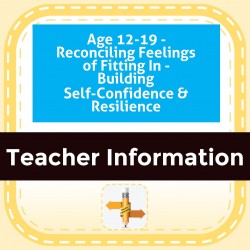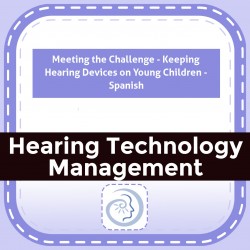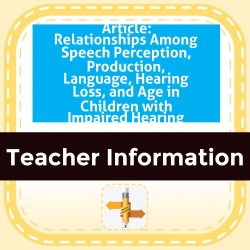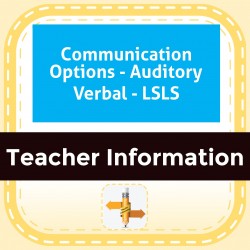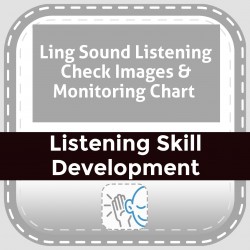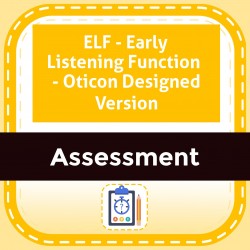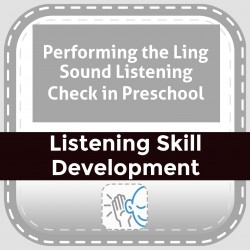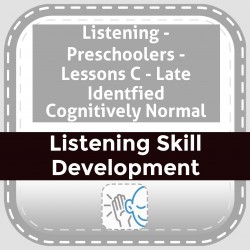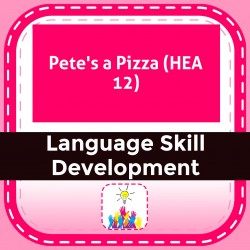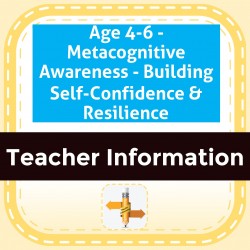Ability Levels
Categories
Resource Types
Age/Grade Range
CCSS
Anchor Standard
Speaking & Listening
Language
Reading
Age 12-19 - Reconciling Feelings of Fitting In - Building Self-Confidence & Resilience
$ 250
For ages 12-19 years: This information addresses feelings of fitting in, problem-solving, social isolation, identity, importance of role models, positive outlook, and dealing with challenges due to he
...
aring loss. The purpose of this book is to raise awareness for the reasons why hearing device rejection happens and specific instruction to occur at different ages to build student resilience and self-confidence, thereby increasing the likelihood that they will not reject using their hearing technology. Specific teaching activities and recommendations for instructional materials to develop identified skills have been included in this Guide.
Meeting the Challenge - Keeping Hearing Devices on Young Children - Spanish Version
$ 0
Brochure specifying what makes it challenging to keep hearing aids on 0-24 month old babies and 2-5 yrs. old preschoolers, why hearing aids are needed, and strategies to help keep them on, including h
...
earing aid retention devices.
Article: RelationsHIPS Among Speech Perception, Production, Language, Hearing Loss, and Age in Children with Impaired Hearing
$ 0
This article describes the results of a study of 87 children with hearing loss that were evaluated over a 3-year period. Results suggest that children will reach a level of over 90% sentence recogniti
...
on in the auditory/visual condition when their language becomes equivalent to that of a normally-hearing 7-year-old. They will enter school at age 12 with an average language delay of 4-5 years unless they receive concentrated and effective language training. 2001
Communication Options - Auditory Verbal - LSLS
$ 0
This resource explores the choice of auditory verbal (listening and spoken language) strategies for communication.
Ling Sound Listening Check Images & Monitoring Chart
$ 095
The first page has 8 early childhood images representing the Ling sounds. Page 2 is a chart for recording results of Ling sound listening checks for use by families or early childhood programs.
ELF - Early Listening Function - Oticon Designed Version
$ 0
Discovery tool for families to raise awareness of the impact of their child's hearing loss and size of their 'listening bubble' in quiet and noise, with and without amplification. Scorable for pre/pos
...
t-test use by DHH professionals. Version designed by Oticon.
Performing the Ling Sound Listening Check in Preschool
$ 095
This handout describes how to perform the Ling sound listening check in the preschool or early childhood classroom setting.
Listening - Preschoolers - Lessons C - Late Identified Cognitively Normal
$ 595
For teachers who work with early identified children with hearing loss. Includes fictional case studies with goals/objectives and specifically targeted activities to use with students who fit a partic
...
ular set of criteria in terms of hearing loss and device. Includes fillable lesson plans.
Pete's a Pizza (HEA 12)
$ 195
Pete's a Pizza - Early Childhood / Preschool teaching materials for the book includes a) a synopsis of the storybook b) a letter to send home to families explaining the storybook unit and activities t
...
hey can do at home c) suggestions for setting up your classroom to revolve around the story (dramatic play area, sensory area, art area, science area, book area, and bulletin board) d) activities separated into two weeks, each week including: a distinctive thematic, e) focus of the Week; Circle Time activities including songs, poems, fingerplays, and story-reading ideas; and six detailed Group Activities with designated target areas, f) snacks related to the story, g) a Pretest and Posttest
Age 4-6 - Metacognitive Awareness - Building Self-Confidence & Resilience
$ 6
For ages 4-6 years: This information addresses students recognizing that they have a hearing loss, understanding feelings, learning expected class listening behaviors, remembering what was heard via s
...
ubvocalization skills, responding to teasing, making friends. The purpose of this book is to raise awareness for the reasons why hearing device rejection happens and specific instruction to occur at different ages to build student resilience and self-confidence, thereby increasing the likelihood that they will not reject using their hearing technology. Specific teaching activities and recommendations for instructional materials to develop identified skills have been included in this Guide.
 Your browser is out of date. For best experience switch to latest updated Browser.
Your browser is out of date. For best experience switch to latest updated Browser.
 Get Chrome
Get Chrome Get Edge
Get Edge Get Firefox
Get Firefox